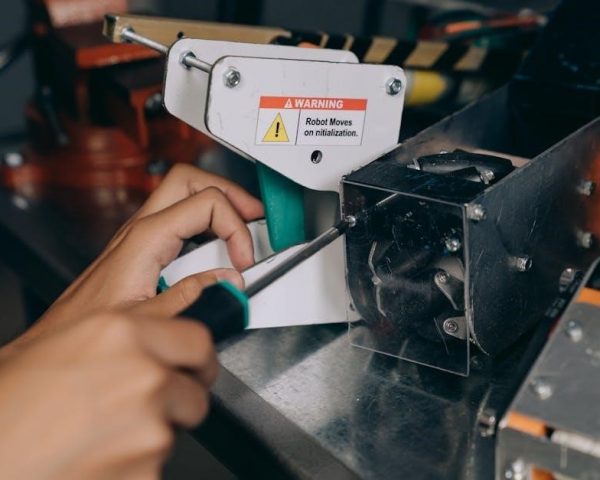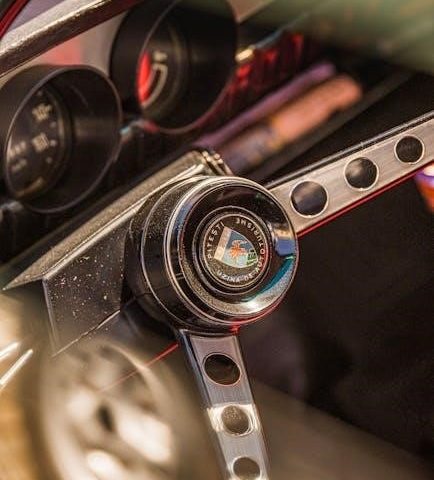This manual serves as a comprehensive guide for diagnosing and resolving common issues with Amana furnaces, covering everything from error codes to DIY repair solutions and maintenance tips.
Overview of Amana Furnace Models
Amana furnaces are known for their reliability and efficiency, offering a range of models to suit different home heating needs. From the basic 80 series to the high-efficiency 90 and 95 series, Amana furnaces provide consistent heat with advanced features like multi-stage heating and variable-speed blowers. The 80 series is ideal for budget-conscious homeowners, while the 90 and 95 series offer higher AFUE ratings for superior energy efficiency. Each model is designed to ensure optimal performance, durability, and comfort, making Amana a trusted choice for residential heating solutions.
Importance of Regular Furnace Maintenance
Regular maintenance is crucial for ensuring your Amana furnace operates efficiently, safely, and reliably. Proper upkeep prevents breakdowns, improves energy efficiency, and reduces utility bills. Annual inspections by professionals can identify potential issues before they escalate, such as faulty sensors or clogged filters. Maintaining your furnace also enhances indoor air quality and prolongs its lifespan. Neglecting maintenance can lead to costly repairs, safety hazards, and premature system failure. Consistent care ensures your furnace performs optimally, providing consistent heat and peace of mind during the colder months.
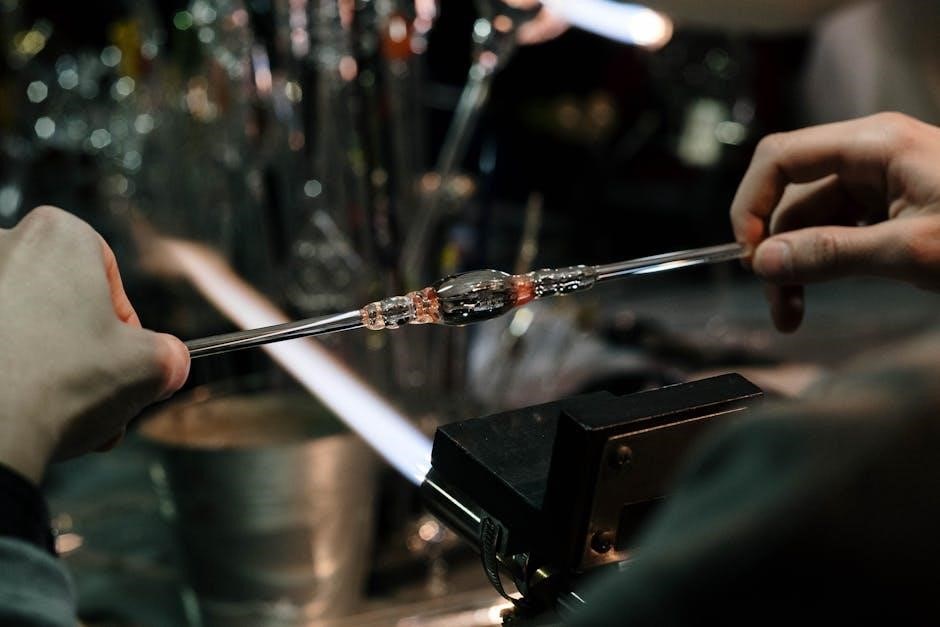
Common Issues with Amana Furnaces
Amana furnaces commonly experience issues like suddenly not turning on, pilot light failures, thermostat malfunctions, and strange noises, affecting home heating performance.
Amana Furnace Not Turning On
If your Amana furnace isn’t turning on, start by checking the pilot light, as it may have gone out. Ensure the thermostat is set to heat and the temperature is higher than the room temperature. A dead battery in the thermostat or incorrect settings could be the culprit. Check the circuit breaker to see if it has tripped and reset it if necessary. Also, verify that the gas valve is fully open and inspect the air filter for cleanliness. If these steps don’t resolve the issue, more complex problems like a faulty flame sensor or ignition system may be at play, requiring professional assistance.
Pilot Light Issues
Pilot light problems are common in Amana furnaces and can prevent the unit from heating. If the pilot light is out, the furnace won’t ignite the gas. Check for drafts or blockages in the venting system that might extinguish the flame. Ensure the gas valve is fully open and that there are no obstructions in the pilot tube. If the pilot light repeatedly goes out, it could indicate a faulty thermocouple or issues with the gas supply. Refer to your manual for relighting instructions or consider professional help if the problem persists after troubleshooting.
Thermostat Malfunction
A malfunctioning thermostat can prevent your Amana furnace from turning on or heating properly. Common issues include dead batteries, incorrect temperature settings, or faulty wiring. Ensure the thermostat is set to “heat” and the desired temperature is higher than the room temperature. Replace batteries if necessary and check for loose connections. If the thermostat still doesn’t function, it may need to be replaced. Refer to your manual for compatibility and installation instructions. Persistent issues may require professional assistance to diagnose and repair complex electrical or sensor problems.
Strange Noises from the Furnace
Strange noises from your Amana furnace, such as clanking, rattling, or whooshing sounds, can indicate potential issues. These noises may stem from loose components, blockages in the vents, or problems with the gas ignition system. It’s important to identify the source of the noise to address it properly. Refer to your troubleshooting manual for guidance on diagnosing and resolving these issues; If the noise persists or worsens, consider consulting a professional to ensure your furnace operates safely and efficiently. Regular maintenance can also help prevent unexpected noises and extend the lifespan of your system.
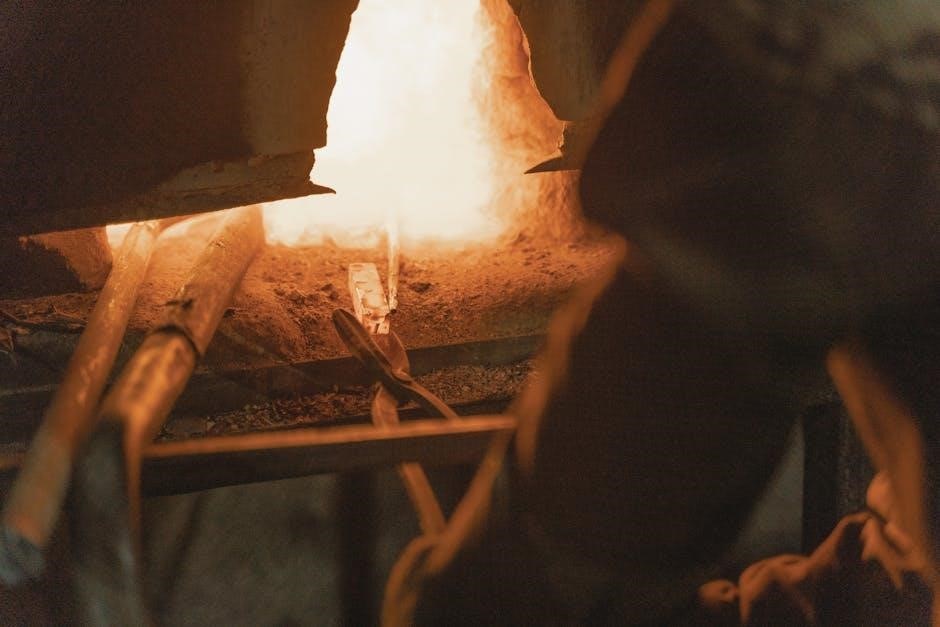
Amana Furnace Error Codes and Their Meanings
Amana furnaces use specific error codes to indicate system issues. These codes help identify problems like ignition failures or sensor malfunctions. Refer to the manual or manufacturer’s guide to understand each code’s meaning and resolve issues effectively.
Interpreting Error Codes
Amana furnace error codes are designed to provide clear insights into system malfunctions. By referencing the user manual or online resources, homeowners can decode these codes, which often flash on the furnace’s control board. Each code corresponds to specific issues, such as faulty sensors, ignition problems, or gas valve malfunctions. Understanding these codes allows for precise troubleshooting, enabling users to address minor issues independently or identify when professional assistance is necessary. This streamlined process minimizes downtime and ensures the furnace operates safely and efficiently.
Common Error Codes and Solutions
Amana furnaces display error codes to indicate specific issues. For instance, error code 4 often signifies a faulty flame sensor, while code 13 may point to a high-limit switch problem. Code 31 typically indicates ignition failure. These codes guide homeowners in identifying malfunctions quickly. Solutions may include cleaning the flame sensor, resetting the high-limit switch, or replacing faulty ignition components. Referencing the manual or online resources provides detailed steps for each code, empowering users to resolve issues efficiently or determine when professional intervention is needed to ensure safety and restore functionality.

DIY Troubleshooting Steps
Start by checking the circuit breaker and ensuring the furnace has power. Inspect the air filter for cleanliness and ensure the thermostat settings are correct. These simple steps often resolve common issues before needing professional help.
Checking the Circuit Breaker
A tripped circuit breaker is a common issue that prevents your Amana furnace from turning on. Locate your home’s electrical panel and inspect the breaker associated with the furnace. If it’s in the “off” position, reset it by flipping it to “on.” If the breaker trips again after resetting, this could indicate an electrical problem. In such cases, it’s essential to contact a licensed electrician to avoid further complications. Regularly checking the circuit breaker can help ensure consistent furnace operation during the heating season.
Inspecting the Air Filter
A dirty or clogged air filter is a common cause of furnace inefficiency. To inspect the air filter, locate it in the furnace or return air duct. Turn off the furnace power before removing the filter. Check for visible dirt, dust, or debris. If the filter is dirty, replace it with a new one or clean it if it’s reusable. A clean air filter ensures proper airflow, improves heating efficiency, and prevents potential issues like overheating or poor performance. Regular inspections and replacements are essential for maintaining optimal furnace operation.
Testing the Thermostat Settings
Ensure the thermostat is set to “Heat” mode and the desired temperature is higher than the room temperature. Check for dead batteries in wireless models and replace them if necessary. Verify that the thermostat is correctly wired and functioning properly. If issues persist, try resetting the thermostat to its default settings or programming a schedule to ensure consistent heating. Improper settings can prevent the furnace from turning on or cause inconsistent heating. Always consult the thermostat manual for specific instructions to ensure accurate configuration and optimal furnace performance.
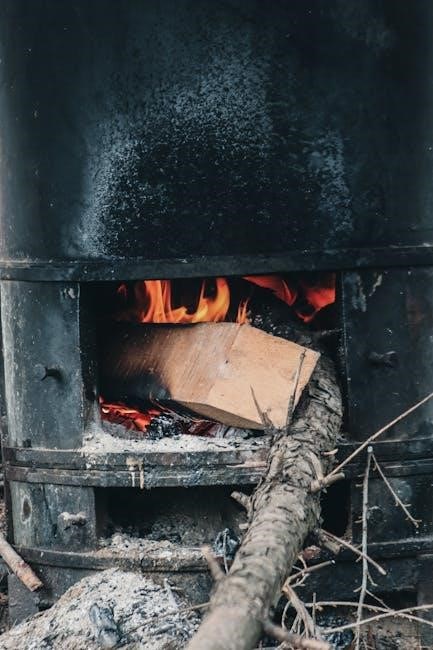
When to Call a Professional
Contact a certified HVAC technician for complex issues like faulty flame sensors, heat exchanger damage, or persistent heating problems that basic troubleshooting cant resolve.
Complex Issues Like Faulty Flame Sensors
A faulty flame sensor can prevent your Amana furnace from igniting properly, leading to intermittent operation or complete shutdown. This sensor is crucial as it detects the flame and ensures gas shuts off if the flame is absent, preventing dangerous gas leaks. If you suspect a malfunction, check for soot buildup or corrosion on the sensor. Cleaning it gently with fine sandpaper may resolve the issue, but if problems persist, replacing the sensor is necessary. Always ensure the furnace is cool and power is off before attempting any repairs. If unsure, consult a professional HVAC technician to avoid safety risks and ensure proper functionality.
Heat Exchanger Problems
Heat exchanger issues in Amana furnaces can lead to dangerous situations, such as carbon monoxide leaks or system failure. Signs of a failing heat exchanger include cracks, unusual noises, or reduced heating efficiency. If you suspect a problem, turn off the furnace and contact a professional immediately. DIY repairs are not recommended due to safety risks. A certified technician will inspect the exchanger for cracks or corrosion and recommend replacement if necessary. Regular maintenance can help prevent such issues by ensuring proper airflow and system operation. Addressing heat exchanger problems promptly is crucial for safety and efficiency.
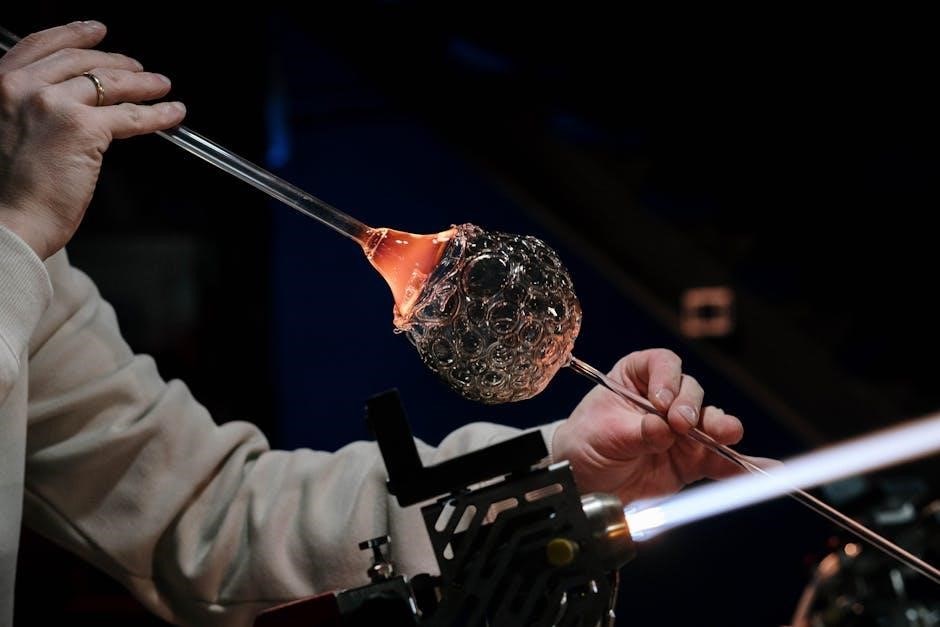
Tools and Materials Needed for Troubleshooting
A multimeter, screwdrivers, pliers, and wrench are essential for diagnosing electrical and mechanical issues. Safety gear like gloves and goggles is also recommended for protection during repairs.
Essential Tools for Furnace Repair
A multimeter is crucial for diagnosing electrical issues, while screwdrivers and pliers help with disassembling components. A wrench is necessary for adjusting gas lines or securing connections. Safety gear like gloves and goggles protects during repairs. Additionally, a flashlight aids in inspecting dark furnace areas, and replacement parts should be on hand if repairs are needed. These tools provide a solid foundation for effectively troubleshooting and resolving common furnace problems, ensuring safety and efficiency throughout the process.
Replacement Parts and Where to Find Them
Common replacement parts for Amana furnaces include air filters, igniter assemblies, flame sensors, and thermocouples. These can be found on Amana’s official website or through licensed distributors like Goodman Global; Online retailers such as Amazon and local HVAC suppliers also carry compatible parts. Always ensure replacement parts are genuine to maintain warranty and safety standards. Refer to your furnace’s model number for precise compatibility. If unsure, consult a professional to avoid further damage or safety risks, especially for complex components like heat exchangers.

Advanced Troubleshooting Techniques
Advanced troubleshooting involves using tools like multimeters for electrical checks and understanding ignition systems. These techniques help diagnose complex issues such as faulty sensors or ignition problems.
Using a Multimeter for Electrical Checks
A multimeter is a crucial tool for diagnosing electrical issues in your Amana furnace. It measures voltage, current, and resistance, helping identify faulty wiring or components. Begin by ensuring the furnace is powered off for safety. Set the multimeter to the appropriate voltage range and test key electrical connections, such as thermostat wires or the circuit board. If readings deviate from expected values, it may indicate issues like short circuits or open connections. This step-by-step process can help pinpoint electrical problems efficiently, ensuring your furnace operates safely and effectively. Regular use of a multimeter can prevent minor issues from escalating into major repairs. Always refer to your furnace’s manual for specific guidance on electrical testing procedures; By mastering this technique, you can troubleshoot common electrical faults confidently, extending your furnace’s lifespan and maintaining optimal performance. Additionally, understanding how to interpret multimeter readings correctly is essential for accurate diagnostics, making it a valuable skill for any homeowner. This approach not only saves time but also reduces the need for professional intervention in many cases. Overall, incorporating a multimeter into your troubleshooting routine enhances your ability to resolve electrical issues promptly and effectively, ensuring your Amana furnace continues to function reliably year-round.
Understanding Gas Furnace Ignition Systems
Amana gas furnaces utilize advanced ignition systems to ensure safe and efficient heating. These systems, such as hot surface ignitors or direct spark ignition, replace traditional pilot lights for improved reliability. When troubleshooting, check for issues like faulty ignitors, blocked gas lines, or malfunctioning sensors. A strong understanding of how these components interact is key to diagnosing problems like intermittent ignition or failure to light. Regular cleaning of the ignition assembly and ensuring proper gas flow can prevent many common issues. Always refer to your manual for model-specific guidance. This knowledge helps you address ignition-related problems effectively, ensuring your furnace operates smoothly and safely.
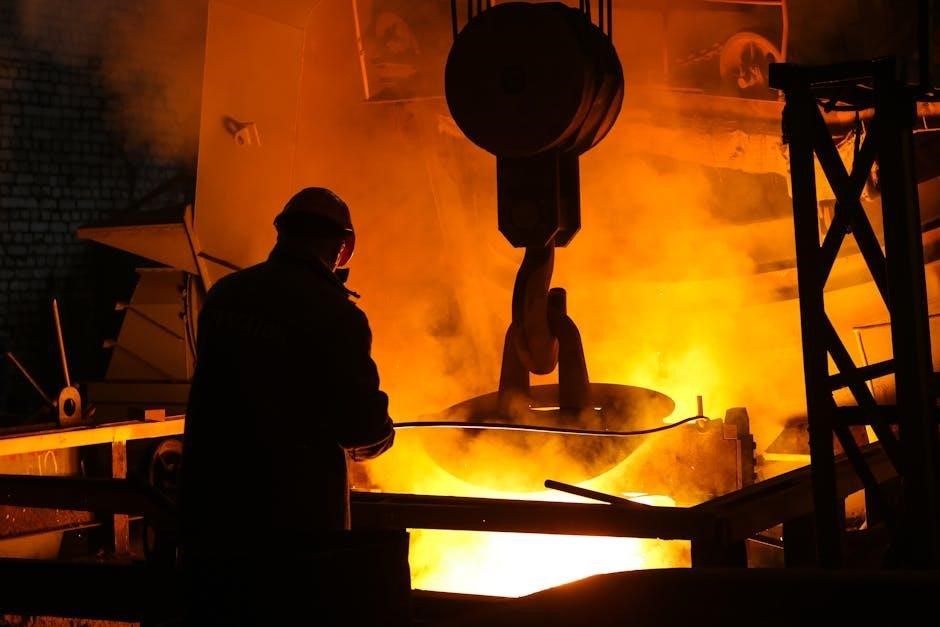
Preventative Maintenance Tips
Regular cleaning of the furnace, inspecting ductwork, and replacing air filters ensure optimal performance. Schedule annual professional inspections to identify potential issues early and maintain efficiency.
Annual Furnace Inspection
An annual inspection by a certified HVAC technician ensures your Amana furnace operates safely and efficiently. The technician will check for wear and tear, clean components, and verify proper gas flow and ignition. They’ll also inspect the heat exchanger for cracks and test for carbon monoxide leaks. This proactive approach helps prevent unexpected breakdowns, reduces energy bills, and extends the furnace’s lifespan. Schedule this inspection before the heating season to ensure reliable performance during colder months.
Cleaning the Furnace and Ductwork
Regular cleaning of your Amana furnace and ductwork is crucial for maintaining efficiency and indoor air quality. Dust and debris buildup can hinder airflow, causing the furnace to work harder and increase energy costs. Use a vacuum with a soft brush to gently clean the furnace’s exterior and internal components. For ductwork, hire a professional to ensure thorough cleaning and inspect for leaks or damage. A clean system not only improves heating performance but also reduces the risk of allergens and contaminants circulating in your home.
This manual provides a detailed guide to troubleshooting and maintaining your Amana furnace, ensuring optimal performance and reliability throughout the heating season.
Final Thoughts on Troubleshooting Your Amana Furnace
Troubleshooting your Amana furnace can save time and money, but knowing when to call a professional is crucial. Regular maintenance, understanding error codes, and DIY fixes can prevent major issues. Always refer to your manual for model-specific guidance. By staying proactive, you ensure your furnace runs efficiently, providing consistent heat and comfort. Remember, safety should always come first when dealing with gas and electrical components.
Resources for Further Assistance
For additional support, visit Amana’s official website, which offers detailed product manuals, error code guides, and troubleshooting tips specific to your furnace model. You can also contact Amana’s customer service at (877) 254-4729 or access their online support portal. Authorized dealers and HVAC professionals can provide expert diagnostics and repairs. Utilize online forums and repair guides for shared experiences and solutions from other users. Ensure you only purchase genuine replacement parts from trusted suppliers to maintain your furnace’s performance and warranty.
